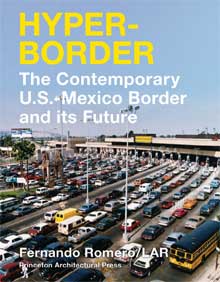 Hyper-Border: The Contemporary U.S.-Mexico Border and Its Future, by architect Fernando Romero (Amazon USA
Hyper-Border: The Contemporary U.S.-Mexico Border and Its Future, by architect Fernando Romero (Amazon USA
Publisher Princeton Architectural Press says: Roving vigilantes, fear-mongering politicians, hysterical pundits, and the looming shadow of a 700-mile-long fence: the U.S.–Mexico border is one of the most complex and dynamic areas on the planet today. With more than one million daily crossings, the border has increasingly has become a hotbed for debate. But too often its complexities are viewed through the myopic lens of illegal immigration, ignoring a multitude of other critical issues that include health, the environment, drug trafficking, free trade, and post-9/11 security.
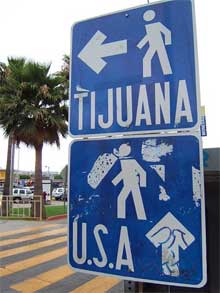
Hyperborder provides the most nuanced portrait yet of this dynamic region. Author Fernando Romero presents a multidisciplinary perspective informed by interviews with numerous academics, researchers, and organizations. He begins by examining issues faced by other border regions including those dividing North and South Korea and Israel and Palestine. A brief summary of the U.S.–Mexico border’s recent history provides a much-needed context for a detailed portrait of the many unique issues the two countries face today. Romero uses current economic, political, social, and environmental trends to project potential scenarios–both positive and negative–for the border at the midway mark of the twenty-first century. Provocatively designed in the style of other kinetic large-scale studies like Rem Koolhaas’s Content and Bruce Mau’s Massive Change, Hyperborder is an exhaustively researched report from the front lines of the border debate. Nonpartisan in its politics and tackling issues from both U.S. and Mexican perspectives, this book is essential reading for anyone who wishes to understand–and find solutions for–the many intertwined issues that define this complex region of the world, and others like it.
This is probably THE book i needed to read. I’m facinated by border issues and in particular with the US/Mexico one. The author claims to be nonpartisan, i don’t know how one can stay neutral when you know that the border is the only one in the world where a developing country is stuck right next to a superpower. Still, there’s no villains and victims in the book, it’s much more complex than that. Romero does a fantastic job at lining up facts and figures to help us clear up our mind on the issue. The amount of research he had to do to present the various aspects of the issue is daunting: from narcotraffic to education, from health to tourism or security.
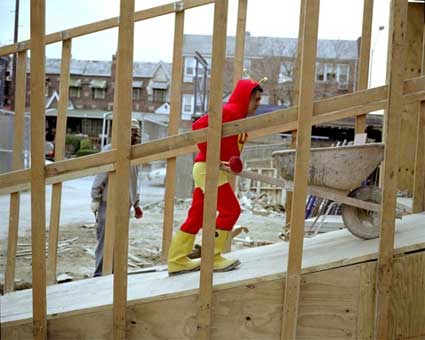 Image from Dulce Pinzón, The Real Story of Superheroes
Image from Dulce Pinzón, The Real Story of Superheroes
First chapter is illuminating. It gives an overview of the variety of borders from around the world, highlighting the type of issue that that particular area has to overcome or has solved and how. Which puts the Mexico/US border in a new light: Could the border become as strictly fortified as the North Korea / South Korea border? Could we imagine that Mexicans and Americans could adopt a collaborative model somewhat similar to the Regio TriRhena where 3 country (France, Germany and Switzerland) administrate jointly a unique “home airport”, called EuroAirport. Could the way narcotraffic has been almost controlled in the border region where Myanmar, Thailand and Laos meet be an inspiration for Mexico and the US?
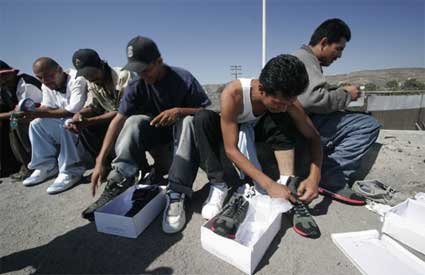 Judi Werthein‘s Brincos, trainers “hacked for border crossing
Judi Werthein‘s Brincos, trainers “hacked for border crossing
On the other hand, tactics piloted along the border could potentially be implemented as models for other areas in the world.
The one thing i wasn’t too keen on in the book are the many data visualization maps and graphics. I do welcome them but some are much more stylish than easily readable.
Hyper-border manages to demonstrate clearly the state of interdependence between the two countries: Mexico’s economy relies on remittances, while the US need Mexican undocumented cheap labour force. Besides, the reciprocal nature of the 14 sister cities who face similar problems (pollution,disease, water supply, etc.) and the steady exchange of goods and people across the border ensures that the bounds are not to weaken.
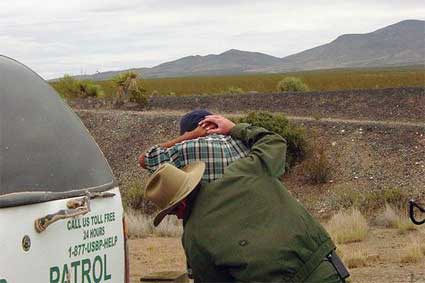 Brett Huneycutt, Victoria Criado and Rudy Adler’s Border Film Project
Brett Huneycutt, Victoria Criado and Rudy Adler’s Border Film Project
Another of Hyper-Border’s strength are the “future scenarios” proposed along the various chapters. They highlight the possible consequences that may happen if progressive and well-informed action is not taken now, they shed light on impacts that today’s decisions could have in the (more or less) long term. Some of them are encouraging and optimistic, others are downright scary. And although one might not always agree with them (or desire to even consider that some scenario could one come true), they have the effect of inviting the readers to reflect, and do more with their brain than just sit there sipping the information.
The book is packed with superlatives because that what best describes the region. So instead of writing the long and enthusiastic review that this book deserves (or maybe i should just write “Get it! It’s an awesome book” and just shut up?), i’ll just list some of the most striking sentences i read in Hyperborders. They might seem drastic and dramatic, given a bit out of context as they are but in his book Romero justifies the superlatives with facts, references and figures.
(p.76) At present there are more American border patrol agents than soldiers in Afghanistan.
(p.85) In Arizona alone, within six months of the Minutemen’s founding in 2005, at least 18 anti-immigrant bills were introduced to the state legislature.
(p.90) The Mexican side of the US-Mexico border is currently the most dangerous place in Latin American to work as a journalist.
(p.106) In 2004, remittances to Mexico equaled $16.6 billion, in 2005 they reached $20 billion and in 2006 they rose higher to $24 billion becoming the second source of US dollars after oil exports.








